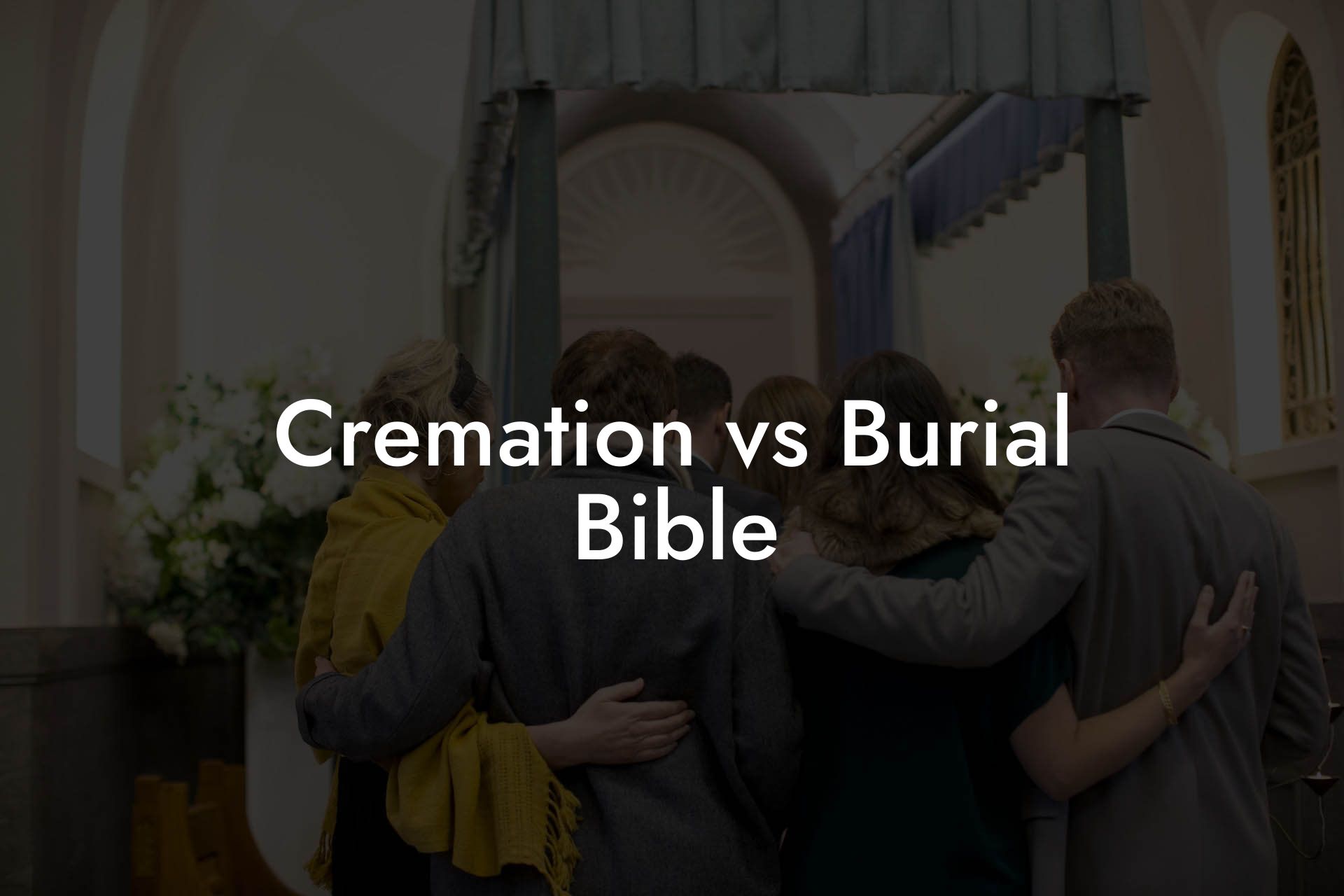Imagine a world where saying goodbye to a loved one is not only a celebration of their life but also a conscious decision that honors the planet. Welcome to the world of cremation, a rapidly growing trend that's redefining the way we approach death care. In this comprehensive guide, we'll delve into the world of cremation, exploring its benefits, options, and everything in between.
Quick Links to Useful Sections
- What is Cremation, and How Does it Work?
- Cremation vs Burial: Understanding the Key Differences
- Cremation Options: Understanding Your Choices
- Traditional Cremation
- Direct Cremation
- Green Cremation
- Resomation
- Cremation and Memorialization: Honoring Your Loved One
- Scattering Ashes
- Urn Placement
- Memorial Gardens
- Keepsake Urns
- Cremation and Funeral Planning: What to Expect
- Choosing a Funeral Home
- Obtaining Permits and Documents
- Preparing the Body
- Scheduling the Cremation
- Frequently Asked Questions about Cremation
- Resources and Community Support: Your Next Steps
What is Cremation, and How Does it Work?
Cremation is a process that reduces a deceased person's body to its basic elements, leaving behind a residue of bone fragments and ash. This is achieved through high-temperature burning, typically between 1400°C to 1800°C, in a specially designed furnace called a cremation chamber.
The cremation process typically takes around 2-3 hours, depending on the size and weight of the body. After the process is complete, the remaining ashes are cooled, processed, and returned to the family in an urn or container.
Cremation vs Burial: Understanding the Key Differences
When it comes to deciding between cremation and burial, there are several factors to consider. Here are some key differences to help you make an informed decision:
- Cost: Cremation is generally more affordable than burial, with prices ranging from $1,000 to $3,000, compared to $7,000 to $10,000 for a traditional burial.
- Environmental Impact: Cremation requires less land and resources than burial, making it a more eco-friendly option. However, the cremation process does release greenhouse gases and pollutants into the atmosphere.
- Personalization: Cremation offers more flexibility when it comes to memorialization and personalization, with options like scattering ashes, creating a memorial garden, or keeping the urn at home.
- Religious and Cultural Significance: Burial is often preferred by certain religious and cultural groups, while cremation is more commonly associated with secular or non-traditional beliefs.
Cremation Options: Understanding Your Choices
When it comes to cremation, there are several options to consider, each with its own unique benefits and characteristics:
Traditional Cremation
This is the most common type of cremation, where the body is cremated in a casket, and the ashes are returned to the family in an urn.
Direct Cremation
This option involves cremating the body without a traditional funeral service or viewing. It's often the most affordable option and is preferred by those who want a simple, low-key goodbye.
Green Cremation
Also known as alkaline hydrolysis, this eco-friendly option uses a water-based solution to break down the body, reducing the environmental impact of traditional cremation.
Resomation
This process uses a combination of water and alkaline solution to break down the body, resulting in a more gentle and environmentally friendly cremation process.
Cremation and Memorialization: Honoring Your Loved One
Cremation offers a range of memorialization options, allowing you to honor your loved one in a way that's meaningful to you:
Scattering Ashes
Scatter the ashes in a special location, such as a favorite park, beach, or mountain, creating a lasting tribute to your loved one.
Urn Placement
Place the urn in a columbarium, mausoleum, or cemetery, providing a permanent resting place for your loved one.
Memorial Gardens
Create a memorial garden or tree planting, using the ashes as fertilizer, creating a living tribute to your loved one.
Keepsake Urns
Keep a small portion of the ashes in a keepsake urn, allowing you to keep your loved one close to your heart.
Cremation and Funeral Planning: What to Expect
When planning a cremation, there are several steps to consider:
Choosing a Funeral Home
Select a funeral home that offers cremation services, ensuring they have the necessary equipment and expertise.
Obtaining Permits and Documents
Secure the necessary permits and documents, including the death certificate, cremation permit, and disposition permit.
Preparing the Body
Prepare the body for cremation, which may include washing, dressing, and placing the body in a casket or container.
Scheduling the Cremation
Schedule the cremation, which may take place at a funeral home, crematorium, or cemetery.
Frequently Asked Questions about Cremation
Here are some frequently asked questions about cremation:
1. What happens to the body during cremation?
The body is reduced to its basic elements, leaving behind a residue of bone fragments and ash.
2. Can I witness the cremation process?
Yes, some funeral homes and crematories offer witness cremation, allowing you to observe the process.
3. How do I know I'm getting the right ashes back?
Funeral homes and crematories follow strict protocols to ensure the ashes are correctly identified and returned to the family.
4. Can I divide the ashes among family members?
Yes, you can divide the ashes among family members, creating multiple urns or keepsake containers.
5. Is cremation a more environmentally friendly option?
Cremation is generally considered a more eco-friendly option than burial, but it still has an environmental impact.
Resources and Community Support: Your Next Steps
If you're considering cremation or have recently experienced a loss, here are some resources to support you:
- National Funeral Directors Association (NFDA)
- International Cemetery, Cremation and Funeral Association (ICCFA)
- Cremation Association of North America (CANA)
- Local grief support groups and counseling services
Remember, saying goodbye to a loved one is never easy, but with the right support and resources, you can navigate this difficult time with confidence and compassion.

